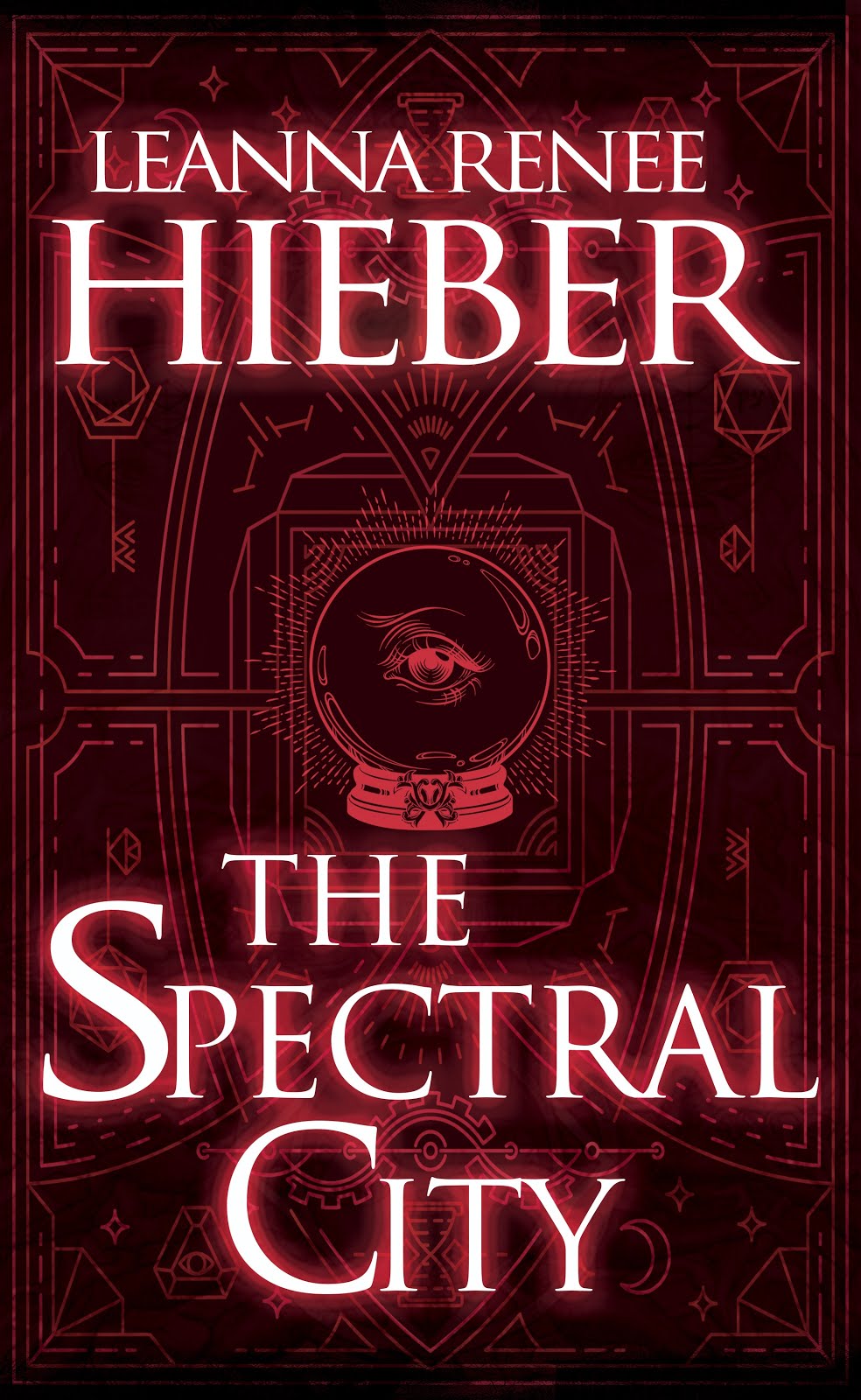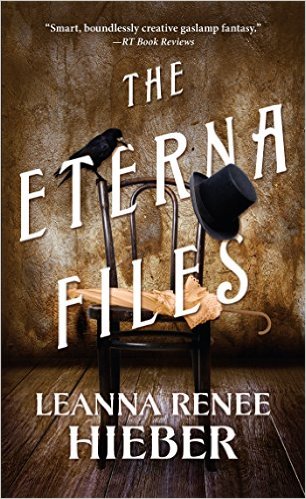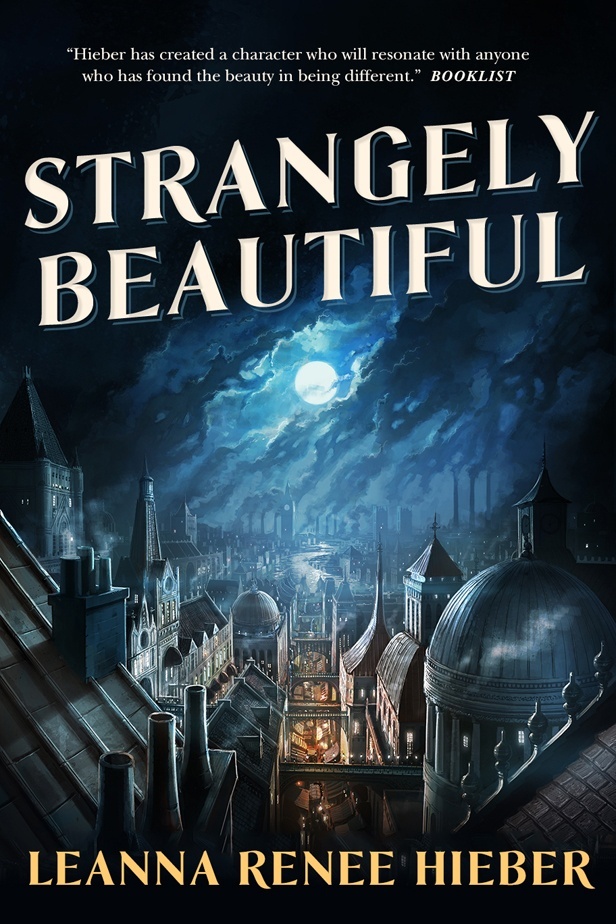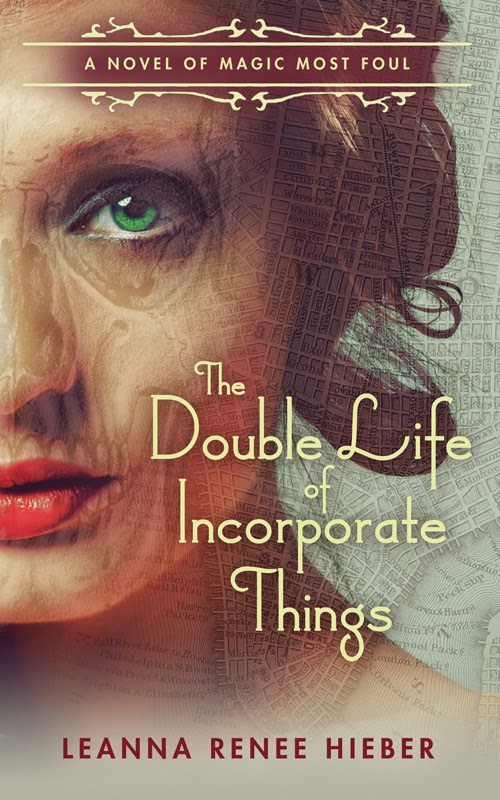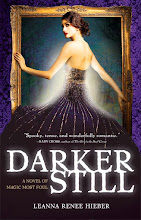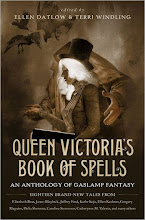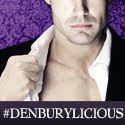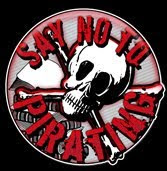STEAMPUNKS 2011 from Andy Gallacher on Vimeo.
Wednesday, March 23, 2011
As Seen on BBC America!
Huge thanks to Ay-Leen the Peacemaker, The Wandering Legion of Thomas Tew, Andy from BBC America and The Way Station for the awesome event that provided the background footage for this brief feature on the BBC World News America yesterday! Very exciting, great work Dr. Grymm! I'm seen here in full regalia alongside similarly regaled and highly regarded fellow fantasy author Mary Rodgers as I prepare for that night's reading from The Strangely Beautiful Tale of Miss Percy Parker. Huzzah!
Monday, March 21, 2011
Scandalous Women: Guest Blogger Leanna Renee Hieber on Clara Lemlich...
Scandalous Women: Guest Blogger Leanna Renee Hieber on Clara Lemlich...: "To commerate the 100th anniversary of The Triangle Shirtwaist Factory Fire, Scandalous Women is pleased to welcome Guest blogger Leanna Renee Hieber on the inimitable Clara Lemlich..."
Thursday, March 17, 2011
Triangle: Remembering The Fire
For those of you who are used to my blog as containing only fluffy updates on books, travels, fun things… This is not one of those posts. This is history at its most tragic.
I’ve just finished watching a review copy of Triangle: Remembering the Fire, premiering March 21st at 9pm on HBO, commemorating the 100th anniversary of the horrific Triangle Shirtwaist Factory fire. I’m wiping my eyes from profound bouts of tears. I’m not one for reviewing books or films, but this is an event that must never, ever, ever be forgotten. My devotion to and career in historical fiction drives me to share the basics of this horrific day in human history, and to encourage you to find out more for yourself, and never to take workers’ rights or workers’ safety for granted.
To be clear, I knew what I was getting into when I sat down with this subject matter. I was well aware of this fire and its infuriating details, first having learned about it during my training as a New York City Tour Guide, from the incredible New York: A Documentary (which I could not possibly recommend enough, it is one of the best and most well-crafted series detailing the history and character of a city) where Ric Burns first taught me about the Triangle Shirtwaist fire in all its terrible details. I wept then, too.
I knew all the historic photos I’d see of the countless heaped, dead bodies on the street, young women having jumped to their deaths in a tangle of cloth and limbs. I knew the outrage I felt then, the same I’m feeling now and whenever I hear the words “Triangle Fire” and see those terrible sepia photographs in my mind’s eye.
There were a few new particulars about the fire that I learned from this 40 minute documentary, and I noted a few things they left out. There were extraordinary human stories as told from descendants of victims and survivors. The beautiful sepia portraits of the young female victims cry out for a better death than they were given. My tears flow now in part out of fear that all that has been put into place after the horrific events a century ago may be undermined if we as a society don’t demand the moral best of ourselves, our workplaces, and those who control them.
About the fire: The Triangle Shirtwaist Factory occupied the top floors of the Asch Building on New York City’s Washington and Greene streets. (Shirtwaists were women’s blouses and the workers were nearly entirely female). It was one of the only garment factories not to have allowed Union and Labor concessions after the Uprising of the 20,000 that launched the Great Strike of 1909 where New York City women took to the streets for rights, safety and fair practices long before they gained the right to vote. Had Triangle implemented some of the safety precautions advocated in these concessions, this tragedy would not have occurred. But there was no federal mandate for factory safety at the time.
Near the end of the work day on March 25th 1911, a fire began on the 8th floor, likely started by a cigarette butt or end of match not entirely extinguished, dropped upon highly flammable scraps of pattern paper and cloth. The floors were jammed with sewing machines, about 300 or so per floor, and with all the paper and cloth (and no sprinklers as they were not required) it was a tinderbox. A telephone operator on the 8th floor phoned the 10th floor and many on that top floor escaped onto the roof and over to the adjascent NYU building where a Law professor and students provided assistance, but in the tumult the 9th floor was not informed until the fire was literally upon them. There were two exits per floor but some exits were locked- presumably to keep the girls from taking breaks. Staircases between floors were only two feet wide and wooden, quickly consumed. There were elevators and while the two noble elevator operators managed to get over 100 women out in about nine trips, bringing the car directly up into the flames, between the heat and weight of bodies jumping down the shaft, the car was incapable of making further trips.
Firefighters were on the scene quickly, but their ladders only reached the 6th floor, hardly helpful to those top floors. Some women began jumping out the windows as an alternative to being burned alive. 9/11 is all too present in our minds when we think of this. Life nets held by firefighters were useless, bodies fell through them. 146 deaths all told. The workforce was mostly Jewish and Italian girls. Girls. The average age of the victims was around 17 to 23.
It took 18 minutes. 18 minutes before there were no more jumping bodies, the floors utterly consumed, fire hoses battling the inferno. 18 minutes for one of the worst industrial accidents in the history of our country to burn a hole right through the heart of the world.
There's more to the story, to the fight, to the indignity. More that will touch and infurate you.
Please visit this site to learn more. Please watch Triangle; Remembering the Fire on March 21st on HBO. If you are in New York City, please take part in the centennial events happening on March 25th. (I’m very upset I cannot attend. I would be there but I’m ironically engaged with many events at the Steampunk Industrial Revolution that weekend).
Details the documentary left out that I'd learned from New York: A Documentary:
- The fire escapes. There were fire escapes that were small and not well supported. The heat of the fire weakened the metal and the women that had poured out onto them dropped with the fire escapes when they gave way, crashing them fatally onto the pavement below.
- While management claims the locked doors were meant to curb breaks, others said it was to keep out Union organizers.
- The engagement rings. If I recall Ric Burns' work correctly, I believe there were 13 engagement rings on the charred fingers of the dead bodies.
(I won’t tell you how HBO's documentary effectively describes the different ways family members managed to identify a series of bodies, you’ll have to have your own tissues on hand for that.)
This is not just a historic event to be looked upon, considered, and filed away under ‘things I know about history’. If we’re not very careful and attentive to worker’s rights, safety standards and regulation, everything we take for granted about a work week and a safe environment could erode. It’s already eroding. Look at Wisconsin, and how workers’ rights have been stripped there; bargaining for pay and safer work spaces has been removed. It’s a slippery and frightening slope once basic rights begin to be taken away. As a member of three unions I fought hard to gain membership into, I so dearly appreciate what I’ve gained from the struggles of those brave women beaten on picket lines, I honour their deaths and I cry all the harder for those sacrifices that shouldn’t have been necessary if factory owners simply would have done the right things, all preventable things, all things that had been urged by the Fire Chief at the time and by Union organizers. It took an event as horrific as Triangle to force uniform change a century ago, and to people like Al Smith and his Factory Commission to enforce it. Labor Unions aren’t something to be looked at as outmoded. Unions are the very things that have fought for what the average American worker now has the privilege of taking for granted. Please honor the memory of the 146 dead by not taking your rights for granted in all of your workplaces.
- Triangle: Remembering the Fire - March 21st, 9pm on HBO
- How you can commemorate
I’ve just finished watching a review copy of Triangle: Remembering the Fire, premiering March 21st at 9pm on HBO, commemorating the 100th anniversary of the horrific Triangle Shirtwaist Factory fire. I’m wiping my eyes from profound bouts of tears. I’m not one for reviewing books or films, but this is an event that must never, ever, ever be forgotten. My devotion to and career in historical fiction drives me to share the basics of this horrific day in human history, and to encourage you to find out more for yourself, and never to take workers’ rights or workers’ safety for granted.
To be clear, I knew what I was getting into when I sat down with this subject matter. I was well aware of this fire and its infuriating details, first having learned about it during my training as a New York City Tour Guide, from the incredible New York: A Documentary (which I could not possibly recommend enough, it is one of the best and most well-crafted series detailing the history and character of a city) where Ric Burns first taught me about the Triangle Shirtwaist fire in all its terrible details. I wept then, too.
I knew all the historic photos I’d see of the countless heaped, dead bodies on the street, young women having jumped to their deaths in a tangle of cloth and limbs. I knew the outrage I felt then, the same I’m feeling now and whenever I hear the words “Triangle Fire” and see those terrible sepia photographs in my mind’s eye.
There were a few new particulars about the fire that I learned from this 40 minute documentary, and I noted a few things they left out. There were extraordinary human stories as told from descendants of victims and survivors. The beautiful sepia portraits of the young female victims cry out for a better death than they were given. My tears flow now in part out of fear that all that has been put into place after the horrific events a century ago may be undermined if we as a society don’t demand the moral best of ourselves, our workplaces, and those who control them.
About the fire: The Triangle Shirtwaist Factory occupied the top floors of the Asch Building on New York City’s Washington and Greene streets. (Shirtwaists were women’s blouses and the workers were nearly entirely female). It was one of the only garment factories not to have allowed Union and Labor concessions after the Uprising of the 20,000 that launched the Great Strike of 1909 where New York City women took to the streets for rights, safety and fair practices long before they gained the right to vote. Had Triangle implemented some of the safety precautions advocated in these concessions, this tragedy would not have occurred. But there was no federal mandate for factory safety at the time.
Near the end of the work day on March 25th 1911, a fire began on the 8th floor, likely started by a cigarette butt or end of match not entirely extinguished, dropped upon highly flammable scraps of pattern paper and cloth. The floors were jammed with sewing machines, about 300 or so per floor, and with all the paper and cloth (and no sprinklers as they were not required) it was a tinderbox. A telephone operator on the 8th floor phoned the 10th floor and many on that top floor escaped onto the roof and over to the adjascent NYU building where a Law professor and students provided assistance, but in the tumult the 9th floor was not informed until the fire was literally upon them. There were two exits per floor but some exits were locked- presumably to keep the girls from taking breaks. Staircases between floors were only two feet wide and wooden, quickly consumed. There were elevators and while the two noble elevator operators managed to get over 100 women out in about nine trips, bringing the car directly up into the flames, between the heat and weight of bodies jumping down the shaft, the car was incapable of making further trips.
Firefighters were on the scene quickly, but their ladders only reached the 6th floor, hardly helpful to those top floors. Some women began jumping out the windows as an alternative to being burned alive. 9/11 is all too present in our minds when we think of this. Life nets held by firefighters were useless, bodies fell through them. 146 deaths all told. The workforce was mostly Jewish and Italian girls. Girls. The average age of the victims was around 17 to 23.
It took 18 minutes. 18 minutes before there were no more jumping bodies, the floors utterly consumed, fire hoses battling the inferno. 18 minutes for one of the worst industrial accidents in the history of our country to burn a hole right through the heart of the world.
There's more to the story, to the fight, to the indignity. More that will touch and infurate you.
Please visit this site to learn more. Please watch Triangle; Remembering the Fire on March 21st on HBO. If you are in New York City, please take part in the centennial events happening on March 25th. (I’m very upset I cannot attend. I would be there but I’m ironically engaged with many events at the Steampunk Industrial Revolution that weekend).
Details the documentary left out that I'd learned from New York: A Documentary:
- The fire escapes. There were fire escapes that were small and not well supported. The heat of the fire weakened the metal and the women that had poured out onto them dropped with the fire escapes when they gave way, crashing them fatally onto the pavement below.
- While management claims the locked doors were meant to curb breaks, others said it was to keep out Union organizers.
- The engagement rings. If I recall Ric Burns' work correctly, I believe there were 13 engagement rings on the charred fingers of the dead bodies.
(I won’t tell you how HBO's documentary effectively describes the different ways family members managed to identify a series of bodies, you’ll have to have your own tissues on hand for that.)
This is not just a historic event to be looked upon, considered, and filed away under ‘things I know about history’. If we’re not very careful and attentive to worker’s rights, safety standards and regulation, everything we take for granted about a work week and a safe environment could erode. It’s already eroding. Look at Wisconsin, and how workers’ rights have been stripped there; bargaining for pay and safer work spaces has been removed. It’s a slippery and frightening slope once basic rights begin to be taken away. As a member of three unions I fought hard to gain membership into, I so dearly appreciate what I’ve gained from the struggles of those brave women beaten on picket lines, I honour their deaths and I cry all the harder for those sacrifices that shouldn’t have been necessary if factory owners simply would have done the right things, all preventable things, all things that had been urged by the Fire Chief at the time and by Union organizers. It took an event as horrific as Triangle to force uniform change a century ago, and to people like Al Smith and his Factory Commission to enforce it. Labor Unions aren’t something to be looked at as outmoded. Unions are the very things that have fought for what the average American worker now has the privilege of taking for granted. Please honor the memory of the 146 dead by not taking your rights for granted in all of your workplaces.
- Triangle: Remembering the Fire - March 21st, 9pm on HBO
- How you can commemorate
Wednesday, March 16, 2011
DARK NEST: RECKONING now available!
 Time out from my regularly scheduled Victoriana to announce a trip to the future...
Time out from my regularly scheduled Victoriana to announce a trip to the future...Dark Nest: Reckoning (futuristic fantasy) - the sequel novella to the 2009 Prism Award winning novella Dark Nest is now available for download by various digital vendors, including ARe and Kindle!
(Regarding pricing, ARe is a price point I feel more comfortable recommending as this is a novella, not a full-length novel. We the authors have no say on pricing.)
This novella will be available via all major digital vendors, including Nook, and also in print, including "Legacy" a Victorian Gothic short story, hopefully by the end of the month.
Visit the publisher, Crescent Moon Press and read an Excerpt!
Monday, March 14, 2011
Leanna and a TARDIS or, Epic Win

So what could be better than a steampunk event in a bar with a TARDIS? Well, not really much of anything. Huge thanks to Ay-Leen the Peacemaker of Beyond Victoriana and Lucretia of The Wandering Legion of the Thomas Tew for organizing Steampunk Stylin' at the uber-awesome The Way Station in Brooklyn this weekend, where their signature drink, The Way Station, is an absinthe-esque journey to exquisite. I was thrilled to read the Ripper chase scene from The Strangely Beautiful Tale of Miss Percy Parker. I was truly honoured to share the stage with the awesome talent of: Samara of Dancing Frozen, Psyche Corporation, Painless Parker, Eli August and all with Dorothy Winterman's gorgeous hats standing guard and a beautifully dressed crowd that never disappoints. One of my partners in crime from way back in the day, Kelley of the entrancing Wickie Arts, even made it out to the festivities.  The TARDIS and me here pretty much sums up my mood about the whole thing. This might go beside the dictionary definition of SQUEE. (Thanks to the multi-talented J. M. Coen for said lovely and squee photos and to Michael Angelus Salerno and his ridiculously awesome steampunk-fitted camera for the photo of me and fellow fantasy author Mary Rodgers in her awesome captain's coat below.) Oh, yeah, and did I mention the BBC was there filming? *faint*
The TARDIS and me here pretty much sums up my mood about the whole thing. This might go beside the dictionary definition of SQUEE. (Thanks to the multi-talented J. M. Coen for said lovely and squee photos and to Michael Angelus Salerno and his ridiculously awesome steampunk-fitted camera for the photo of me and fellow fantasy author Mary Rodgers in her awesome captain's coat below.) Oh, yeah, and did I mention the BBC was there filming? *faint*

 The TARDIS and me here pretty much sums up my mood about the whole thing. This might go beside the dictionary definition of SQUEE. (Thanks to the multi-talented J. M. Coen for said lovely and squee photos and to Michael Angelus Salerno and his ridiculously awesome steampunk-fitted camera for the photo of me and fellow fantasy author Mary Rodgers in her awesome captain's coat below.) Oh, yeah, and did I mention the BBC was there filming? *faint*
The TARDIS and me here pretty much sums up my mood about the whole thing. This might go beside the dictionary definition of SQUEE. (Thanks to the multi-talented J. M. Coen for said lovely and squee photos and to Michael Angelus Salerno and his ridiculously awesome steampunk-fitted camera for the photo of me and fellow fantasy author Mary Rodgers in her awesome captain's coat below.) Oh, yeah, and did I mention the BBC was there filming? *faint*
Next time you're up for an adventure, hit up The Way Station. It's bigger on the inside.
What's Leanna's next event? Why, she's the Literary Guest of Honour at the Steampunk Industrial Revolution!! Check it out!
Wednesday, March 9, 2011
Leanna's Do-It-Yourself Guide to Book Trailers
Note-
This article was originally written for my RWA NYC Chapter, but as I've been reprinting my Marketing Smackdown column here on the blog, I wanted to include this article.
I wrote this article because people have liked my book trailers and asked me to talk about how I did it, so I’m sharing my thoughts. I'm in no way an expert, I'm a trial-by-fire kind of girl. When you discover something else, new, better, cool, please share other ideas/resources with your writer friends! For those who haven’t seen my book trailers, visit my YouTube channel.
Before you decide to do a book trailer, ask yourself:
Is this worth the time, money and energy I’ll be putting into it? - I don't do book trailers for my smaller works because I have to make a financial choice about what to promote. While I do trailers myself, the trailer was not free, because I was sure to buy royalty-free images and buy royalty-free music so that I was released from copyright infringement. I believe I ended up spending somewhere around $130 dollars.
Does a Book Trailer translate directly into a book sale? I’m not sure, and there's a lot of talk on both sides of the fence, but it gives people a sense of your work in a visual way, and the more ways you can market your book, the better. It opens up new venues, there are many author sites to use and upload them, they attract the more visual connoisseur and are far more eye-catching than mere text and coverblurbs.
Step #1:
Think of your book and write a short teaser script. Your book in one paragraph. Make it catchy. While you can certainly have someone narrate the story and record it, like in a movie trailer, what if someone is watching at work with the sound off? Having text makes sure people can see what you’re trying to sell, and if your recorder isn’t professional studio quality, you don’t want it to cheapen your trailer. Keep it simple, like a cover blurb cut in half. If there’s a ton of text, people will lose interest. A sentence or two at most per image. If right now you are already stuck and/or panicking, watch some movie trailers or book trailers on YouTube, you’ll get ideas. The text will determine your images and your images determine the $ spent, so do text first.
Step #2:
Open a movie-making program on your computer. - Windows has a basic “My Movie Maker” - Mac has “iMovie” - Apple has “Final Cut and Final Cut pro” movie making software (more advanced) - Surf the web for free media / movie making software, just don’t download from a site that looks sketchy. - You might also be able use a slide-show program, just be sure you can make it into a .wmv file or other uploadable media file (check and see what your options are under your “Save As”.) Get familiar with what your program does. I did mine using Windows “My Movie Maker”. It’s very user friendly, with a lot of click and drag options onto a ‘timeline’ of your movie. You can run through these programs’ tutorials. (Or if you’re hands-on like me, just tinker till you get it). Experiment with loading pictures and music files into the program and learning how to arrange them, time them, and caption them differently. It’s fun to tinker.
Step #3:
Think about the “Look” of your book. What are the colors of your book? The sounds? I stick within the color palettes established by my books and book covers and make sure nothing looks too modern in my Victorian England (I had to crop the cars out of the bottom of my Tower Bridge photo – even still, it’s anachronistic because the bridge went up in 1894 and my book takes place in 1888 – but hey, this is Hollywood folks – just don’t make those mistakes in your book!) What are the colors that you think of for your hero, your heroine? These very important “look and feel” decisions on your setting and your storyline will be visceral clues for the audience. Try to be consistent with your choices. Keep in mind that we all have distinct emotional and physical associations with color and sound, work with it rather than go against it. If you use photos of people for your characters, be aware that whatever images you use for the hero/heroine might work as a movie works in imprinting the image of those people onto your readers’ minds, so choose them carefully if you use them.
Step #4:
Start looking at image sites.
Examples: http://stockphotography.lifetips.com/ http://www.stockphotography.com/ - http://www.stockphotos.com/ http://www.istockphoto.com/index.php - http://www.acclaimimages.com/ http://www.gettyimages.com/
Do some price checking before you buy, some sites have better deals/packages than others. You can’t legally just pull stuff from google images, if you do, you must ask permission from the photo credit or website. You can certainly use some of your own images, but consider these caveats. Don’t cast a picture of your best friend as your heroine without asking her permission. Make sure a specific photo of your own won’t look out of place against the more vague and general mood-setting photos you might get from photo sites. Make sure the resolution and quality of the photo you use matches with the photos you buy. You will probably lose photo resolution when it uploads to sites, I notice this with YouTube. You want the visuals to look consistent in quality. Toying with your photos can give them fun moods and can work to even out the quality of the prints. Changing a photo from color to black and white might hide the fact that its lower resolution or quality. For those of us dealing with historical settings, the Sepia tone setting does wonders.
(Note – I won’t be talking about using actors, nor would I encourage the use of actors in a book trailer, and I am one, so you know I mean no disrespect. You’re not promoting a movie. While many top-selling authors do use actors, unless you’re a NYT bestseller and have a huge production budget - or unless you want to use the trailer as your experimental filmmaking project too – it’s not going to look professional unless you have access to top-shelf production companies and talent)
Editing:
This means the order and timing of the pictures on screen, adding text onto those pictures, or in between pictures. The exact process of step by step editing depends on the program you’re using, so I can’t really go into a whole ‘how to’ since programs vary But essentially the trick with editing is to create the proper timing and flow of each picture/segment. Keep your text and images simple so that you don’t have to sit on the images or text for a long time to figure them out. Make sure it’s time enough to read it, but that the images and text keep flowing. Your video will have a ‘timeline’ that grows the more you add, you can rearrange your images and text on this timeline, but remember shifting one thing affects the rest of the flow. Keep it under 2 minutes, otherwise sites like Facebook won’t upload it. You run the risk of losing viewers if it’s not succinct, and the file becomes too unwieldy if it’s long. Readers I spoke with said they won’t look at a book trailer over 2 minutes.
Try to avoid ‘choppy’ looks or sequences – there are transition effects to smooth one image and/or text into the next one as well as fading in, easing the image in or out and fading out. These give some nice movement qualities to static images, so play with what your movie making program can do and see what looks good. Save a striking image for last but remember it’s a teaser, so leave people wanting more.
-
Music? If you want to use music as an underscore, I find it effective. Be sure it’s something that fits with the mood of your book. Pick music that’s a nice compliment but not competition with the images. If the piece is too dynamic, it might be hard to sync the images to the rise and fall of the music, perhaps pick something a little more generally atmospheric to the world of your book. I use Chopin waltzes and bought the download for a one-time fee to assure I would be free from copyright infringement. A few royalty free music sites: http://musicbakery.com/ - http://incompetech.com/m/c/royalty-free - http://www.royaltyfreemusic.com/ - http://www.shockwave-sound.com/ - http://www.stockmusicstore.com/ -
Editing the music: Depending on your program, adding music can be easy using an MP3 file, I literally “clicked and dragged” the MP3 file from a folder and into my open movie-maker window. Again, the exact particulars will depend on program. Make sure your music syncs up with the pictures. If you have a really bleak image but really happy or upbeat music at that moment, it’ll look/sound odd, try to pick something that compliments the trajectory of your text and images.
Where do you put the trailer once its done?
On your website. On your blog. On MySpace. On Facebook. Anywhere you can upload video. On free author pages like Manic Readers http://www.manicreaders.com/ and trailer site Blazing Trailers: www.blazingtrailers.com/index.php.
See if your publisher will put it on their website. YouTube is a must. It’s free. A lot of sites use YouTube as default for uploading video. When you sign up for a free YouTube channel, it can be like a free author page. And it’s a great way to expose your work to a hugely trafficked site. Without announcement on my part other than this chapter loop, I have about 150 views in a month, just because of how I “tagged” it, people searching for Book Trailers or Victorian London or Dark Fantasy or related subjects can find it because I “Tagged” it (like you do in blogs) with key search words. You can also purchase affordable sponsored video plans via YouTube. Have fun, stay true to your book, and you could come away with a great little marketing tool!
Click on the Marketing Smackdown label to visit other tips!
This article was originally written for my RWA NYC Chapter, but as I've been reprinting my Marketing Smackdown column here on the blog, I wanted to include this article.
I wrote this article because people have liked my book trailers and asked me to talk about how I did it, so I’m sharing my thoughts. I'm in no way an expert, I'm a trial-by-fire kind of girl. When you discover something else, new, better, cool, please share other ideas/resources with your writer friends! For those who haven’t seen my book trailers, visit my YouTube channel.
Before you decide to do a book trailer, ask yourself:
Is this worth the time, money and energy I’ll be putting into it? - I don't do book trailers for my smaller works because I have to make a financial choice about what to promote. While I do trailers myself, the trailer was not free, because I was sure to buy royalty-free images and buy royalty-free music so that I was released from copyright infringement. I believe I ended up spending somewhere around $130 dollars.
Does a Book Trailer translate directly into a book sale? I’m not sure, and there's a lot of talk on both sides of the fence, but it gives people a sense of your work in a visual way, and the more ways you can market your book, the better. It opens up new venues, there are many author sites to use and upload them, they attract the more visual connoisseur and are far more eye-catching than mere text and coverblurbs.
Step #1:
Think of your book and write a short teaser script. Your book in one paragraph. Make it catchy. While you can certainly have someone narrate the story and record it, like in a movie trailer, what if someone is watching at work with the sound off? Having text makes sure people can see what you’re trying to sell, and if your recorder isn’t professional studio quality, you don’t want it to cheapen your trailer. Keep it simple, like a cover blurb cut in half. If there’s a ton of text, people will lose interest. A sentence or two at most per image. If right now you are already stuck and/or panicking, watch some movie trailers or book trailers on YouTube, you’ll get ideas. The text will determine your images and your images determine the $ spent, so do text first.
Step #2:
Open a movie-making program on your computer. - Windows has a basic “My Movie Maker” - Mac has “iMovie” - Apple has “Final Cut and Final Cut pro” movie making software (more advanced) - Surf the web for free media / movie making software, just don’t download from a site that looks sketchy. - You might also be able use a slide-show program, just be sure you can make it into a .wmv file or other uploadable media file (check and see what your options are under your “Save As”.) Get familiar with what your program does. I did mine using Windows “My Movie Maker”. It’s very user friendly, with a lot of click and drag options onto a ‘timeline’ of your movie. You can run through these programs’ tutorials. (Or if you’re hands-on like me, just tinker till you get it). Experiment with loading pictures and music files into the program and learning how to arrange them, time them, and caption them differently. It’s fun to tinker.
Step #3:
Think about the “Look” of your book. What are the colors of your book? The sounds? I stick within the color palettes established by my books and book covers and make sure nothing looks too modern in my Victorian England (I had to crop the cars out of the bottom of my Tower Bridge photo – even still, it’s anachronistic because the bridge went up in 1894 and my book takes place in 1888 – but hey, this is Hollywood folks – just don’t make those mistakes in your book!) What are the colors that you think of for your hero, your heroine? These very important “look and feel” decisions on your setting and your storyline will be visceral clues for the audience. Try to be consistent with your choices. Keep in mind that we all have distinct emotional and physical associations with color and sound, work with it rather than go against it. If you use photos of people for your characters, be aware that whatever images you use for the hero/heroine might work as a movie works in imprinting the image of those people onto your readers’ minds, so choose them carefully if you use them.
Step #4:
Start looking at image sites.
Examples: http://stockphotography.lifetips.com/ http://www.stockphotography.com/ - http://www.stockphotos.com/ http://www.istockphoto.com/index.php - http://www.acclaimimages.com/ http://www.gettyimages.com/
Do some price checking before you buy, some sites have better deals/packages than others. You can’t legally just pull stuff from google images, if you do, you must ask permission from the photo credit or website. You can certainly use some of your own images, but consider these caveats. Don’t cast a picture of your best friend as your heroine without asking her permission. Make sure a specific photo of your own won’t look out of place against the more vague and general mood-setting photos you might get from photo sites. Make sure the resolution and quality of the photo you use matches with the photos you buy. You will probably lose photo resolution when it uploads to sites, I notice this with YouTube. You want the visuals to look consistent in quality. Toying with your photos can give them fun moods and can work to even out the quality of the prints. Changing a photo from color to black and white might hide the fact that its lower resolution or quality. For those of us dealing with historical settings, the Sepia tone setting does wonders.
(Note – I won’t be talking about using actors, nor would I encourage the use of actors in a book trailer, and I am one, so you know I mean no disrespect. You’re not promoting a movie. While many top-selling authors do use actors, unless you’re a NYT bestseller and have a huge production budget - or unless you want to use the trailer as your experimental filmmaking project too – it’s not going to look professional unless you have access to top-shelf production companies and talent)
Editing:
This means the order and timing of the pictures on screen, adding text onto those pictures, or in between pictures. The exact process of step by step editing depends on the program you’re using, so I can’t really go into a whole ‘how to’ since programs vary But essentially the trick with editing is to create the proper timing and flow of each picture/segment. Keep your text and images simple so that you don’t have to sit on the images or text for a long time to figure them out. Make sure it’s time enough to read it, but that the images and text keep flowing. Your video will have a ‘timeline’ that grows the more you add, you can rearrange your images and text on this timeline, but remember shifting one thing affects the rest of the flow. Keep it under 2 minutes, otherwise sites like Facebook won’t upload it. You run the risk of losing viewers if it’s not succinct, and the file becomes too unwieldy if it’s long. Readers I spoke with said they won’t look at a book trailer over 2 minutes.
Try to avoid ‘choppy’ looks or sequences – there are transition effects to smooth one image and/or text into the next one as well as fading in, easing the image in or out and fading out. These give some nice movement qualities to static images, so play with what your movie making program can do and see what looks good. Save a striking image for last but remember it’s a teaser, so leave people wanting more.
-
Music? If you want to use music as an underscore, I find it effective. Be sure it’s something that fits with the mood of your book. Pick music that’s a nice compliment but not competition with the images. If the piece is too dynamic, it might be hard to sync the images to the rise and fall of the music, perhaps pick something a little more generally atmospheric to the world of your book. I use Chopin waltzes and bought the download for a one-time fee to assure I would be free from copyright infringement. A few royalty free music sites: http://musicbakery.com/ - http://incompetech.com/m/c/royalty-free - http://www.royaltyfreemusic.com/ - http://www.shockwave-sound.com/ - http://www.stockmusicstore.com/ -
Editing the music: Depending on your program, adding music can be easy using an MP3 file, I literally “clicked and dragged” the MP3 file from a folder and into my open movie-maker window. Again, the exact particulars will depend on program. Make sure your music syncs up with the pictures. If you have a really bleak image but really happy or upbeat music at that moment, it’ll look/sound odd, try to pick something that compliments the trajectory of your text and images.
Where do you put the trailer once its done?
On your website. On your blog. On MySpace. On Facebook. Anywhere you can upload video. On free author pages like Manic Readers http://www.manicreaders.com/ and trailer site Blazing Trailers: www.blazingtrailers.com/index.php.
See if your publisher will put it on their website. YouTube is a must. It’s free. A lot of sites use YouTube as default for uploading video. When you sign up for a free YouTube channel, it can be like a free author page. And it’s a great way to expose your work to a hugely trafficked site. Without announcement on my part other than this chapter loop, I have about 150 views in a month, just because of how I “tagged” it, people searching for Book Trailers or Victorian London or Dark Fantasy or related subjects can find it because I “Tagged” it (like you do in blogs) with key search words. You can also purchase affordable sponsored video plans via YouTube. Have fun, stay true to your book, and you could come away with a great little marketing tool!
Click on the Marketing Smackdown label to visit other tips!
Monday, March 7, 2011
Leanna's Marketing Smackdown #2 - Tips for Writers
About the Marketing Smackdown: Last year I wrote a quarterly column for my local RWA Chapter, RWA NYC, in their Keynotes Newsletter. Since I'm continuing the column into 2011, I thought I'd offer the 2010 posts here. While I'm not remotely a marketing expert, I do spend a lot of time on various marketing strategies and happen to have a lot to say about it. I hope writers might find this useful, and that readers and fans might find it interesting (or perhaps daunting) to know some of the many things we authors are doing while trying to juggle everything else in our life.
Marketing Smackdown #2 - Top Ten Marketing Musts
Copyright 2010 Leanna Renee Hieber
10. Have a website. Even if you’re not published. This is non-negotiable. Blogs like Wordpress and Blogger are free and have some flexible templates, are user friendly and they’re great places to start and you can buy a domain name and have it routed to the blog. It’s a great place to begin saying who you are, what you write, what organizations you belong to, and begin to create the network that will support you when you are published.
9. Have something other than your website where you can interact with readers, and at least have a jumping-off point. This can be a blog, Facebook Fanpage (free, I recommend it), etc. Have several ways people can find you and follow what you’re doing, but pick the ones you like. Just like there are 1,000 social networking sites out there, different people like/use different things. You don’t have to be ON all of them, but at least have a page up with basic information on several. (Example: I don’t like MySpace but I keep it up because some readers are only there. I update it randomly, but it has all the critical info people need to know to find me and my books elsewhere where I’m more active).
8. Leanna’s opinion: You hear me say this a lot. Twitter. It’s easy, low maintenance, low word count, great way to find out about industry stuff and link to content like blog posts, articles, etc and interact with other readers and authors in a vibrant way – it’s a big world-wide bulletin board and I’ve already mentioned it drives more traffic to my website.
7. Do some sort of advertising. Print advertising options are expensive and few and far between but a Romantic Times ad in their ‘debut author’ spotlight might not be a bad idea. Online advertising can be affordable (If you have a book trailer YouTube is an affordable way to advertise, Facebook has advertising options, The Romance Studio is great, a lot of romance blogs / forums have ad space, find some sites you like and see if they’ve advertising packages). Don’t go overboard on promo items but do have one useful item that you like that showcases your work; i.e. bookmarks, excerpt booklets, etc.
6. Think outside the box. What skills do you offer and what are your networks to rely on? What expertise do you have and how can you make that work for you? Example: My “Direct Your Book” workshop that I’ve now taught for several RWA chapters because of my theatre background which is a unique approach to thinking about writing. What we do outside of writing can be a great interest / tool / audience. Get the word out: Let your Alma Mater know what you’re up to, your hometown radio station, a local Meetup group, a bowling league, whatever.
5. Contests. People love free stuff. It doesn’t have to be extravagant, but people will show up to your blog, website, twitter, etc, for free stuff. This is a way to build a mailing list. But you have to find a way of getting the word out about said contest. This is where things like twitter / facebook, etc come in handy. If your publisher has a forum, post contest info there.
4. Lose some sleep. It’s true that the more time you put into marketing in an online presence or at live events and conferences, the more you will get out of it. You don’t have to lose as much sleep as I have in the past year. *blink* *blink* but a month before your release day and your release week, give yourself a nice big push, as much as you can.
3. Find time for personal touches. I got a great response from readers who entered my contest who didn’t win but yet I sent them a signed bookmark as a token of appreciation for their interest and many wrote back, saying how much they appreciated it and were looking forward to my books. Balance live events (conferences, signings, etc.) with online presence. Face-time in both places is a good idea.
2. If a book blogger wants you to do an interview / Q and A with them, say yes. It’s free advertising for you, make time for it, it doesn’t have to be a lengthy piece, but book bloggers have an incredible network online and it’s a great place for people to discover you. My relationship with book bloggers has served me very well thus far, and they cross promote each other’s sites like nobody’s business.
1. Be nice. There’s nothing more important than this. People will offer you opportunities, share your work, get excited with you, etc. if you’re nice. We all love to write (otherwise we’re in the wrong business and should get out now) so let that love shine through. Love this mad business rather than fight it, you’ll have a better and healthier momentum with which to market your work with grace and flair.
Happy Writing, happy selling!
Tweet? Follow me @leannarenee
Facebook
Website
Marketing Smackdown #2 - Top Ten Marketing Musts
Copyright 2010 Leanna Renee Hieber
10. Have a website. Even if you’re not published. This is non-negotiable. Blogs like Wordpress and Blogger are free and have some flexible templates, are user friendly and they’re great places to start and you can buy a domain name and have it routed to the blog. It’s a great place to begin saying who you are, what you write, what organizations you belong to, and begin to create the network that will support you when you are published.
9. Have something other than your website where you can interact with readers, and at least have a jumping-off point. This can be a blog, Facebook Fanpage (free, I recommend it), etc. Have several ways people can find you and follow what you’re doing, but pick the ones you like. Just like there are 1,000 social networking sites out there, different people like/use different things. You don’t have to be ON all of them, but at least have a page up with basic information on several. (Example: I don’t like MySpace but I keep it up because some readers are only there. I update it randomly, but it has all the critical info people need to know to find me and my books elsewhere where I’m more active).
8. Leanna’s opinion: You hear me say this a lot. Twitter. It’s easy, low maintenance, low word count, great way to find out about industry stuff and link to content like blog posts, articles, etc and interact with other readers and authors in a vibrant way – it’s a big world-wide bulletin board and I’ve already mentioned it drives more traffic to my website.
7. Do some sort of advertising. Print advertising options are expensive and few and far between but a Romantic Times ad in their ‘debut author’ spotlight might not be a bad idea. Online advertising can be affordable (If you have a book trailer YouTube is an affordable way to advertise, Facebook has advertising options, The Romance Studio is great, a lot of romance blogs / forums have ad space, find some sites you like and see if they’ve advertising packages). Don’t go overboard on promo items but do have one useful item that you like that showcases your work; i.e. bookmarks, excerpt booklets, etc.
6. Think outside the box. What skills do you offer and what are your networks to rely on? What expertise do you have and how can you make that work for you? Example: My “Direct Your Book” workshop that I’ve now taught for several RWA chapters because of my theatre background which is a unique approach to thinking about writing. What we do outside of writing can be a great interest / tool / audience. Get the word out: Let your Alma Mater know what you’re up to, your hometown radio station, a local Meetup group, a bowling league, whatever.
5. Contests. People love free stuff. It doesn’t have to be extravagant, but people will show up to your blog, website, twitter, etc, for free stuff. This is a way to build a mailing list. But you have to find a way of getting the word out about said contest. This is where things like twitter / facebook, etc come in handy. If your publisher has a forum, post contest info there.
4. Lose some sleep. It’s true that the more time you put into marketing in an online presence or at live events and conferences, the more you will get out of it. You don’t have to lose as much sleep as I have in the past year. *blink* *blink* but a month before your release day and your release week, give yourself a nice big push, as much as you can.
3. Find time for personal touches. I got a great response from readers who entered my contest who didn’t win but yet I sent them a signed bookmark as a token of appreciation for their interest and many wrote back, saying how much they appreciated it and were looking forward to my books. Balance live events (conferences, signings, etc.) with online presence. Face-time in both places is a good idea.
2. If a book blogger wants you to do an interview / Q and A with them, say yes. It’s free advertising for you, make time for it, it doesn’t have to be a lengthy piece, but book bloggers have an incredible network online and it’s a great place for people to discover you. My relationship with book bloggers has served me very well thus far, and they cross promote each other’s sites like nobody’s business.
1. Be nice. There’s nothing more important than this. People will offer you opportunities, share your work, get excited with you, etc. if you’re nice. We all love to write (otherwise we’re in the wrong business and should get out now) so let that love shine through. Love this mad business rather than fight it, you’ll have a better and healthier momentum with which to market your work with grace and flair.
Happy Writing, happy selling!
Tweet? Follow me @leannarenee
Website
Subscribe to:
Posts (Atom)

